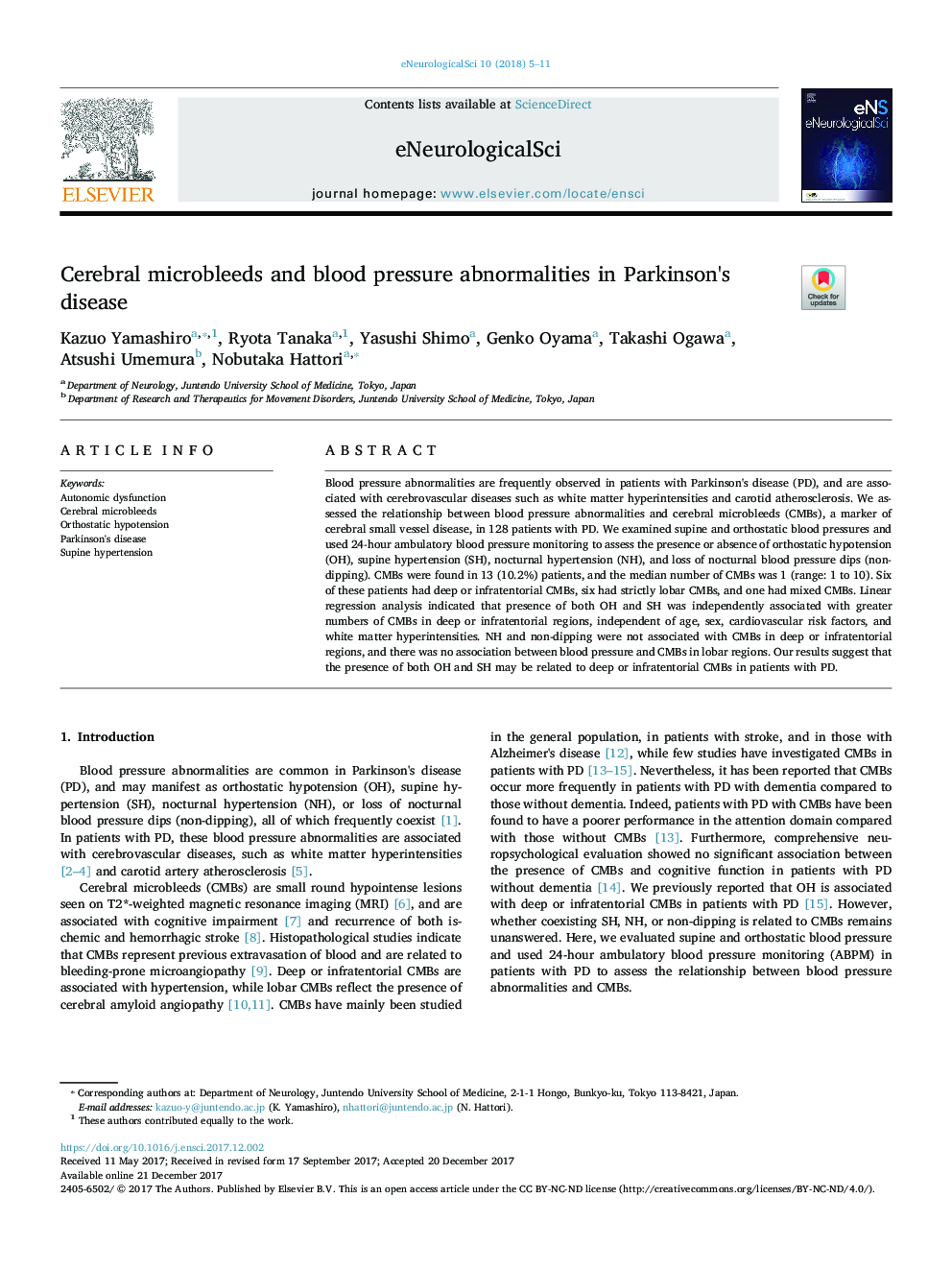| Article ID | Journal | Published Year | Pages | File Type |
|---|---|---|---|---|
| 8683443 | eNeurologicalSci | 2018 | 7 Pages |
Abstract
Blood pressure abnormalities are frequently observed in patients with Parkinson's disease (PD), and are associated with cerebrovascular diseases such as white matter hyperintensities and carotid atherosclerosis. We assessed the relationship between blood pressure abnormalities and cerebral microbleeds (CMBs), a marker of cerebral small vessel disease, in 128 patients with PD. We examined supine and orthostatic blood pressures and used 24-hour ambulatory blood pressure monitoring to assess the presence or absence of orthostatic hypotension (OH), supine hypertension (SH), nocturnal hypertension (NH), and loss of nocturnal blood pressure dips (non-dipping). CMBs were found in 13 (10.2%) patients, and the median number of CMBs was 1 (range: 1 to 10). Six of these patients had deep or infratentorial CMBs, six had strictly lobar CMBs, and one had mixed CMBs. Linear regression analysis indicated that presence of both OH and SH was independently associated with greater numbers of CMBs in deep or infratentorial regions, independent of age, sex, cardiovascular risk factors, and white matter hyperintensities. NH and non-dipping were not associated with CMBs in deep or infratentorial regions, and there was no association between blood pressure and CMBs in lobar regions. Our results suggest that the presence of both OH and SH may be related to deep or infratentorial CMBs in patients with PD.
Keywords
Related Topics
Life Sciences
Neuroscience
Endocrine and Autonomic Systems
Authors
Kazuo Yamashiro, Ryota Tanaka, Yasushi Shimo, Genko Oyama, Takashi Ogawa, Atsushi Umemura, Nobutaka Hattori,
